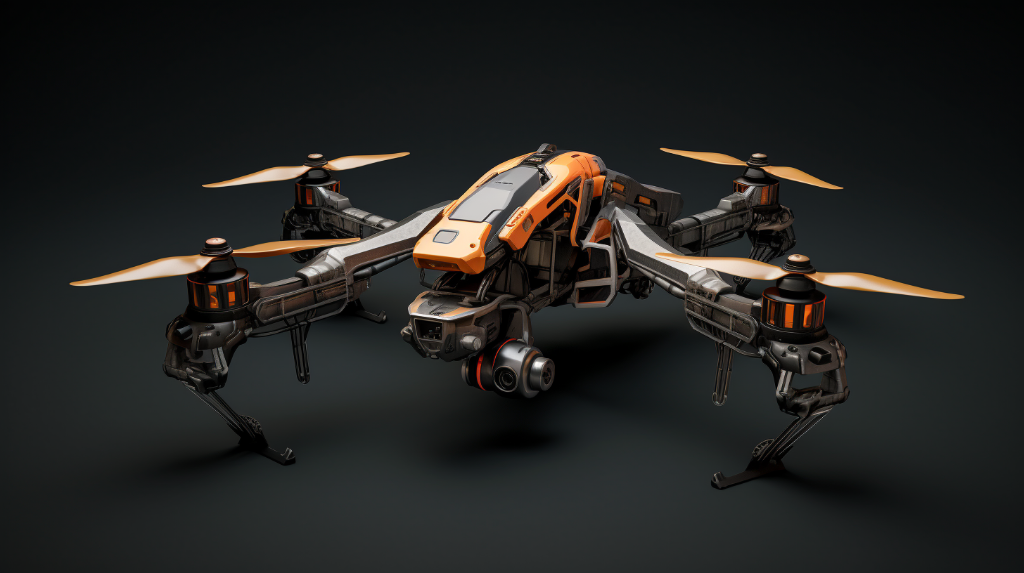The Future of Construction Surveying: Synergizing Metal Detectors, Total Stations, and Aerial GNSS RTK Technology
By SurveyEquipmentGuyAs the world continues to progress in the field of construction, surveying plays a critical role in ensuring accurate measurements and efficient project management. However, the future of construction surveying is evolving at a rapid pace, thanks to the integration of advanced technologies. In particular, the combination of metal detectors, total stations, and aerial GNSS RTK technology is set to revolutionize the way construction surveying is conducted. Let’s delve into this fascinating amalgamation of tools and explore its potential.
The Power of Metal Detectors in Surveying

Imagine a scenario where construction workers are mapping out a building site and come across an unexpected obstacle buried beneath the surface. In the past, identifying such obstacles would have been time-consuming and potentially hazardous. However, metal detectors are now being integrated into construction surveying tools, providing an efficient solution.
Metal detectors can accurately detect metallic objects beneath the ground, allowing surveyors to map out potential obstacles and adjust construction plans accordingly. By synergizing metal detectors with other surveying technologies, construction projects can avoid costly delays and ensure worker safety.
Total Stations: Precision and Efficiency Combined
While metal detectors aid in underground detection, total stations enhance the accuracy and efficiency of above-ground surveying. Total stations combine electronic theodolites with electronic distance measurement (EDM) capabilities, allowing surveyors to measure both distances and angles simultaneously.
This integration of technologies provides construction surveyors with precise and real-time measurements. By using total stations, surveyors can capture data efficiently and seamlessly. Furthermore, these tools can communicate directly with other surveying devices, boosting collaboration among the construction team and reducing errors.
Aerial GNSS RTK Technology: Taking Surveying to New Heights

Picture a construction site from high above, with an unmanned aerial vehicle (UAV) equipped with global navigation satellite system (GNSS) and real-time kinematic (RTK) technology swiftly navigating the airspace. Aerial GNSS RTK technology leverages these tools to collect accurate positioning data from the sky.
This aerial perspective enables surveyors to map vast areas quickly, providing a comprehensive overview of the construction site. By analyzing this aerial data, project managers can make informed decisions, monitor progress, and detect any deviations from the initial plan. Aerial GNSS RTK technology saves time, money, and effort by expediting the surveying process and reducing the need for ground-based measurements.
The Future Synergy: A Game-Changer in Construction Surveying
Combining the powers of metal detectors, total stations, and aerial GNSS RTK technology presents an exciting future for construction surveying. This harmonious fusion allows for a comprehensive assessment of both above-ground and underground elements. With accurate data collection and efficient collaboration, construction projects can be executed with precision and speed.
Utilizing these advanced technologies can revolutionize construction planning, enabling project managers to anticipate and circumvent potential obstacles. Timelines can be optimized, resources can be allocated effectively, and the overall quality of construction can be improved.
Conclusion
The future of construction surveying is bright, with the combined potential of metal detectors, total stations, and aerial GNSS RTK technology. Embracing these advancements will empower construction industry professionals to overcome challenges, streamline processes, and enhance overall project outcomes.
As we move forward, it is crucial to embrace technological innovations and explore the possibilities they bring to construction surveying. By synergizing these tools, we can shape a future where construction projects are executed with precision, efficiency, and safety.
